
Just in case you've been living under a rock for the last seven years, here's the specs breakdown for the phone cameras I'm looking at here:
- Nokia 808 PureView (2012): 1/1.2" 41MP sensor, PureView oversampled down to 5MP by default, but with a 'Creative' 8MP mode, used here for more accurate comparison, Xenon flash
- Nokia Lumia 1020 (2013): 1/1.5" 41MP sensor, PureView oversampled down to 5MP (and with no way to change, though as with the 808 you do get some lossless zoom if needed), Xenon flash
- Microsoft Lumia 950 (2015): 1/2.4" 20MP sensor, PureView oversampled down to 8MP by default. Full resolution possible, though kept here at 8MP for ease of comparison and maximum quality, triple LED flash
- Nokia 9 (2019): five 1/2.9" sensors, each 9MP in 16:9 (the aspect ratio used in these comparisons), with three monochrome and two colour sensor set-ups, backed up by image processing to intelligently combine and adjust results, single LED flash and Time-of-Flight sensor to measure depth across a scene.
Spanning a massive seven years, an eternity in phone technology, the newer phone camera should be in a different league, but raw physics also plays a part and those large sensors on the original PureView devices must surely also factor in.
Because I'm comparing four phone cameras at once, I can't use our usual two-way comparator - rather I'll put up comparison crops in a grid and link to the original images for your own analysis. The overall 'scene' contexts are from whichever phone camera most accurately represented what my eyes saw.
Note that there's more to the Nokia 9 imaging system than 'just' shooting JPGs - its USPs, if any, are:
- in its 'Bokeh' mode, at least, being able to refocus after the fact, thanks to a decent depth map and good algorithms. Results are hit and miss, depending on subject, as you'll see in the 'Flowers' scene below.
- being able to edit its own RAW (DNG) files on the phone itself is not only possible, but recommended, with Adobe Lightroom being offered. Most other top phones can do this, too, though the required add-on software usually isn't needed, since the phone's built-in image processing produces JPGs which are demonstrably 'good enough'. This isn't necessarily the case with the Nokia 9, see below. I may come back to a RAW/DNG comparison in the next feature, if there's interest.
Test 1: Sunny landscape
An easy starter for all four smartphone cameras, shot mid-afternoon with the sun low in the March sky. Here's the overall scene:
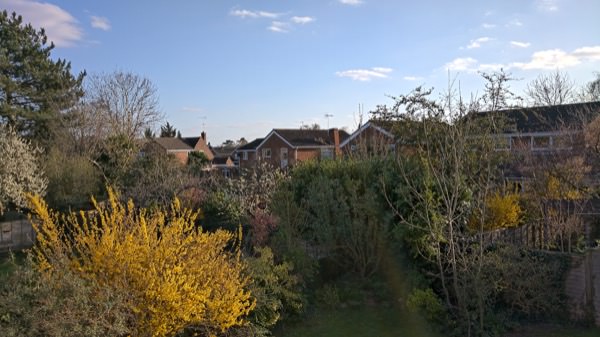
And here are central crops from (clockwise from top left) the Nokia 808, Lumia 1020, Lumia 950, and Nokia 9 (i.e. the latter is bottom left), click on any of the device names for the original JPG photos, for your own analysis.
(If viewing this article on a narrow mobile display then you'll see the crops one above the other, in order 808, 1020, Nokia 9, 950)

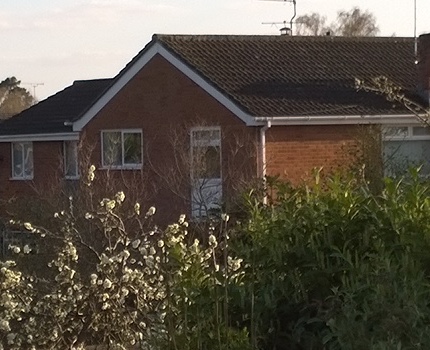
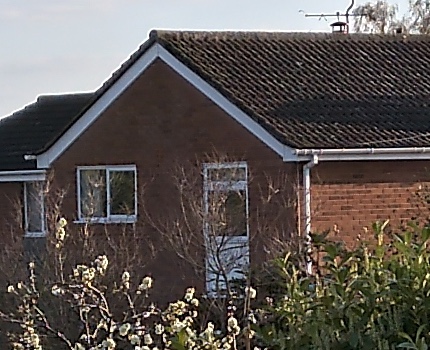
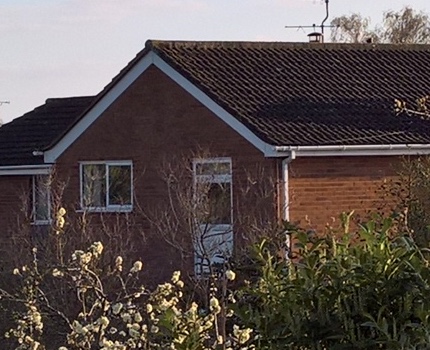
Despite being slightly lower resolution (5MP) by default, the Lumia 1020 takes this one for its ultra-natural, ultra-pure result (bricks, roof tiles, and leaves are all giveaways here. While the Nokia 808 gets close, but the lack of OIS - even in the sun here - and the older sensor mean a lack of definition, ultimately. The Lumia 950 produces its usual detailed, but ever so slightly sharpened and contrasty result, while the Nokia 9's image is just a little too sharpened and edge-enhanced, giving more of a 'photocopy' look.
Nokia 808: 8 pts; Lumia 1020: 10 pts; Lumia 950: 9 pts; Nokia 9: 8 pts
Test 2: Bright zoom
In bright overcast conditions, zoomed in by a factor of 2x to 2.5x (depending on the phone and UI!) Here's the overall, unzoomed scene:
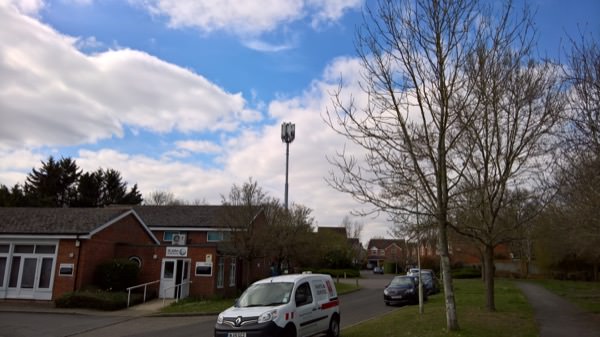
And here are central crops from (clockwise from top left) the Nokia 808, Lumia 1020, Lumia 950, and Nokia 9 (i.e. the latter is bottom left), click on any of the device names for the original JPG photos, for your own analysis.
(If viewing this article on a narrow mobile display then you'll see the crops one above the other, in order 808, 1020, Nokia 9, 950)
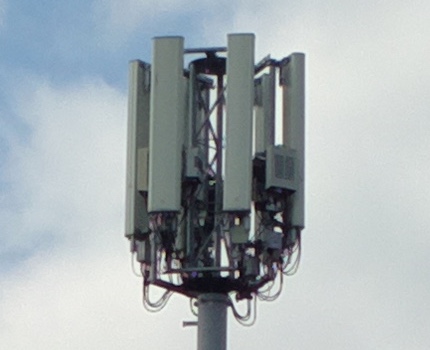
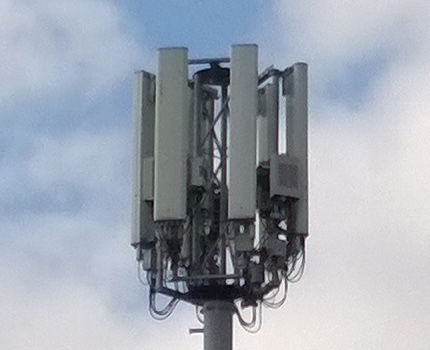


It's much the same story with this zoom shot as in the first test scene, with the six year old Lumia 1020 producing an almost perfect photo, with its 2.5x lossless (PureView) zoom showing great details and no artefacts. The Nokia 808 gets very close with similar lossless zoom, but again the sensor age gets in the way (it's not BSI). In contrast, the lossy zoom results from the Nokia 9 and Lumia 950 are a bit of a shock. The 950 is never very good with zoom, mind you - I expected more from the Nokia 9, with those five sensors and plenty of parallax to fill in inter-pixel gaps from the ' main' sensor. It's not clear whether Nokia/HMD will ever get round to implementing PureView 'zoom', but I suspect it can be done if the right image processing boffins are set to work.
Nokia 808: 9 pts; Lumia 1020: 10 pts; Lumia 950: 8 pts; Nokia 9: 7 pts
Test 3: Sunny close-up/bokeh
A nice colourful bunch of artificial flowers on a memorial plaque, shot at a couple of feet away in bright sun. This is partly the Nokia 9's party trick of course, generating (in theory) stunning bokeh, i.e. going beyond 'optical' bokeh. So I used its dedicated 'Bokeh' mode for maximum benefit. Here's the overall scene:
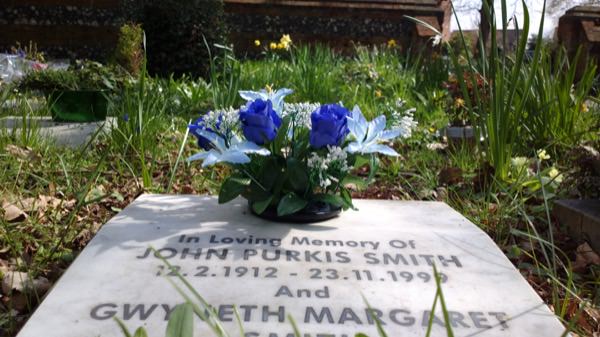
And here are central crops from (clockwise from top left) the Nokia 808, Lumia 1020, Lumia 950, and Nokia 9 (i.e. the latter is bottom left), click on any of the device names for the original JPG photos, for your own analysis.
(If viewing this article on a narrow mobile display then you'll see the crops one above the other, in order 808, 1020, Nokia 9, 950)


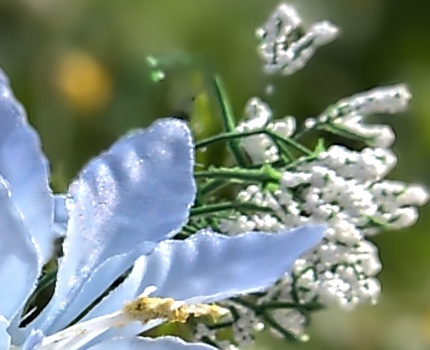
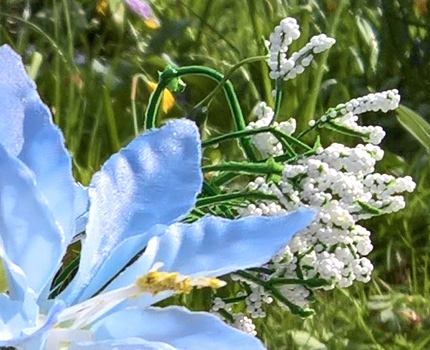
The larger lenses of the Nokia 808 and Lumia 1020 arguably produce the best natural/optical bokeh, with stunning photos here. And the Lumia 950 to a lesser degree, but still a nice clear shot. The Nokia 9's image, viewed as a web resolution snap (e.g. immediately below) looks phenomenal, and would be striking on social media. But, and it's a big but in my view, the crop above shows how the ToF sensor and depth map that controls the bokeh 'effect' is ultimately flawed and makes a mess of really fine detail. So plant stems, stray human hair, and so on. The green stem loop in the crop above has been erroneously erased by the Nokia 9's image processing.

Nokia 808: 10 pts; Lumia 1020: 10 pts; Lumia 950: 9 pts; Nokia 9: 8 pts
Test 4: Indoors
Not too bright, but also not too gloomy, with sunlight coming in the high windows from four sides of this church scene. Plenty of detail to look at, though. Here's the overall scene:
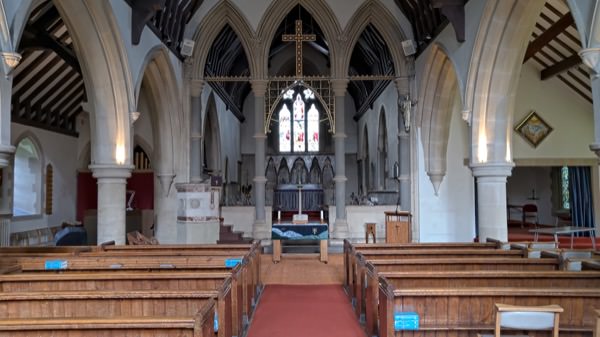
And here are central crops from (clockwise from top left) the Nokia 808, Lumia 1020, Lumia 950, and Nokia 9 (i.e. the latter is bottom left), click on any of the device names for the original JPG photos, for your own analysis.
(If viewing this article on a narrow mobile display then you'll see the crops one above the other, in order 808, 1020, Nokia 9, 950)

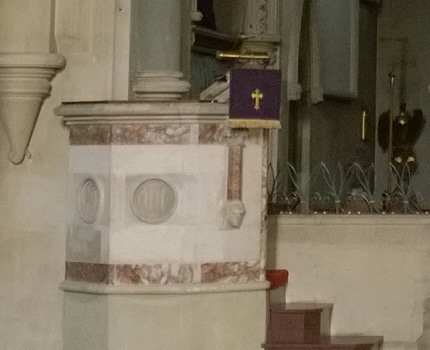
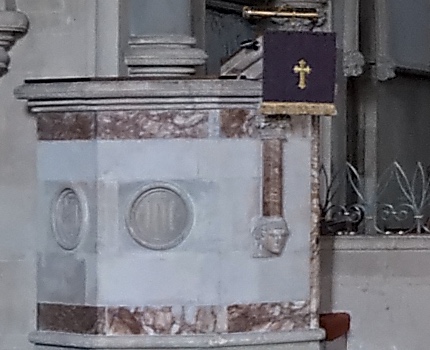
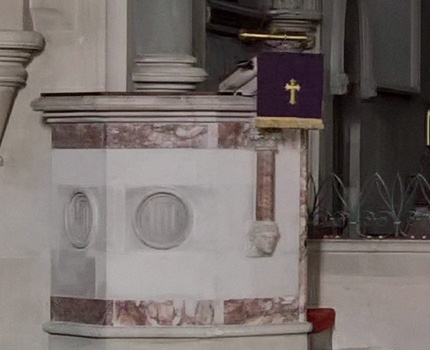
Plenty of good and bad points surfacing here. The Nokia 808 and Nokia 9 both nail the colour of the stone, but the 808's lack of OIS means that the 1/12s exposure shows up my slight hand wobble as blur, while the new 9's shot is crisp enough (1/30s exposure) but there's some noise and the usual over-zealous sharpening. Meanwhile, the Lumia 1020's infamous yellow cast creeps in, and the Lumia 950 ends up as the pick of the bunch, with the best balance of colour accuracy, genuine detail, and lack of digital noise.
Nokia 808: 6 pts; Lumia 1020: 8 pts; Lumia 950: 10 pts; Nokia 9: 8 pts
Test 5: 2m subject, average lighting
A photogenic static subject at typical snapping distance, in neutral lighting and few distractions. This should be easy for all four devices. Here's the overall scene:

And here are central crops from (clockwise from top left) the Nokia 808, Lumia 1020, Lumia 950, and Nokia 9 (i.e. the latter is bottom left), click on any of the device names for the original JPG photos, for your own analysis.
(If viewing this article on a narrow mobile display then you'll see the crops one above the other, in order 808, 1020, Nokia 9, 950)
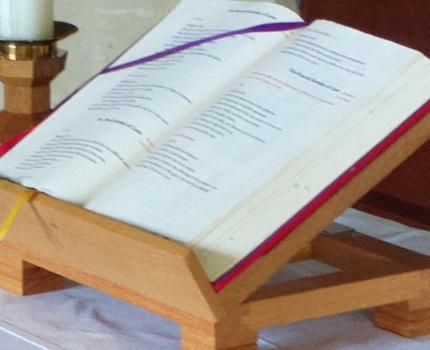
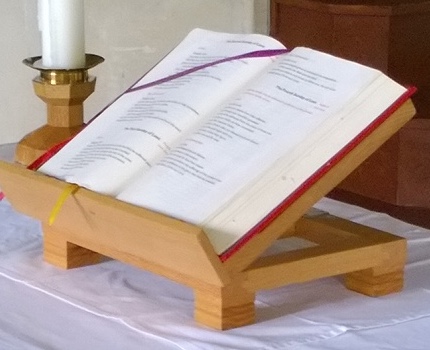
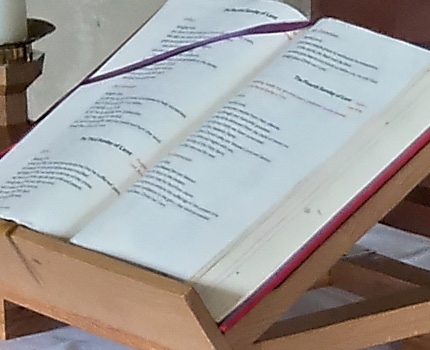
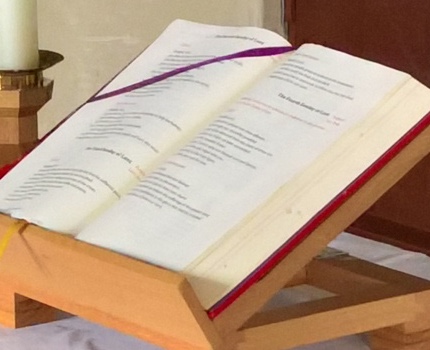
Having said that the subject is 'easy', there's detail that has to be got right, with fine text on the lectionary and texture on the wooden supports. The Lumia 950 gets top marks here for detail, you can even read the heading on the right hand page ("The Fourth Sunday of Lent"), though I have to dock it one point for the wood being a little too 'orange'. The 1020's 5MP default resolution is at a disadvantage here, though it does very well indeed (and could be losslessly zoomed a bit if the user so wanted using the spare capacity in that 40MP sensor). The unsharpened Nokia 808 is ultra natural, though yet again the lack of OIS would have been an issue if my hand hadn't been so steady! While the new Nokia 9's JPG sharpening also makes the heading visible, but at the expense of artefacts everywhere else, look at the state of the smaller text and at the edges of the wood here.
Nokia 808: 8 pts; Lumia 1020: 9pts; Lumia 950: 9 pts; Nokia 9: 7 pts
Test 6: Low light zoom
Now for a real test: challenging light and some zoom. Statues at the far end of the church, zoomed in by a factor of 2x to 2.5x (depending on the phone and UI!) Here's the overall, unzoomed scene:

And here are central crops from (clockwise from top left) the Nokia 808, Lumia 1020, Lumia 950, and Nokia 9 (i.e. the latter is bottom left), click on any of the device names for the original JPG photos, for your own analysis.
(If viewing this article on a narrow mobile display then you'll see the crops one above the other, in order 808, 1020, Nokia 9, 950)


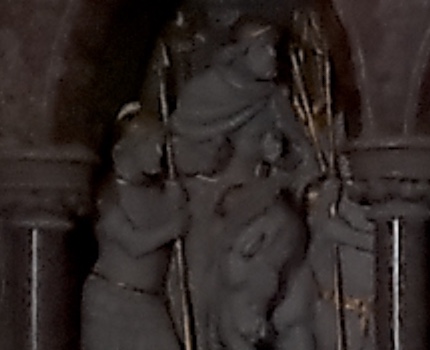
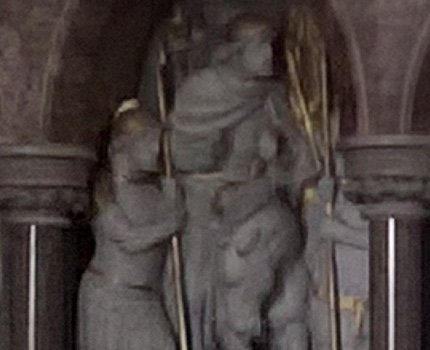
The Nokia 808 does pretty well, with the brightest crop here and plenty of detail, though also quite a bit of digital noise (because, when zoomed like this, there's no PureView oversampling, of course). The Lumia 1020 has a slightly newer (BSI) sensor, plus OIS, and as a result I'd give it an overall win here, even if the gold detailing isn't quite as striking. The Lumia 950 is pretty good too, despite going into lossy digital zoom slightly here, with just a few artefacts. The Nokia 9's image is dark, though perhaps realistically so. But there's something slightly artificial about the detailing, I think. A subjective scoring data point here!
Nokia 808: 8 pts; Lumia 1020: 9 pts; Lumia 950: 8 pts; Nokia 9: 7 pts
Test 7: Piercing the gloom
Controlled low light in this very gloomy ante room, very dim to my naked eyes. Here's the overall scene, made brighter by the phone cameras here(!!):
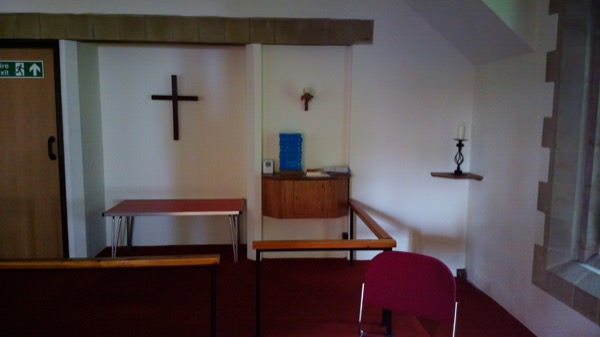
And here are central crops from (clockwise from top left) the Nokia 808, Lumia 1020, Lumia 950, and Nokia 9 (i.e. the latter is bottom left), click on any of the device names for the original JPG photos, for your own analysis.
(If viewing this article on a narrow mobile display then you'll see the crops one above the other, in order 808, 1020, Nokia 9, 950)
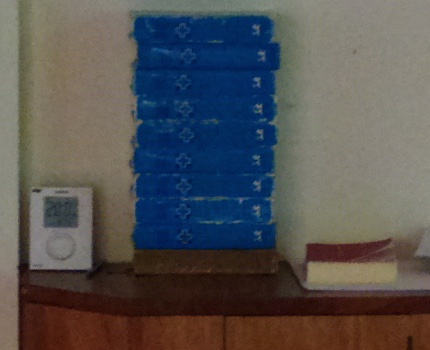
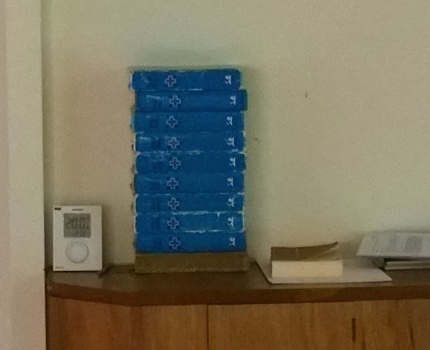
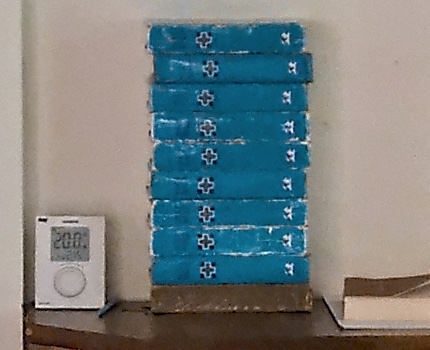
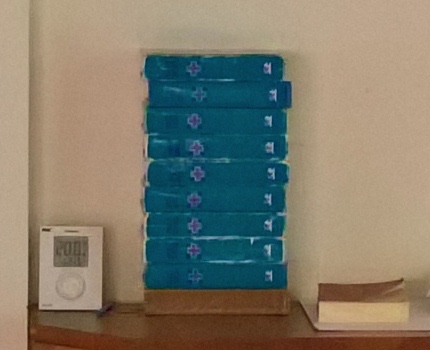
Even the Nokia 808's fabled purity is strained to the limit here in terms of noise in this very dark room, but it does get the book colours right, plus my steady hand again saved it from stability disaster. The Lumia 1020's shot is best overall, because there's reasonable colour accuracy, plus stability-induced purity in the wall and other surfaces. While the Lumia 950 gets close, but the book is starting to turn turqoise. And the Nokia 9's colour rendition is definitely wrong, though it did manage to sharpen up the temperature display on the monitor - the same sharpening makes a right mess of the general detail in the scene though.
Nokia 808: 7 pts; Lumia 1020: 9 pts; Lumia 950: 8 pts; Nokia 9: 7 pts
Test 8: Night junction
A typical night time scene, about an hour after sunset, with some bright spots but mostly darkness and just a little light left in the sky - not too artificial a snap, though most people's photos would be more interesting than this suburban roundabout! Here's the overall scene:
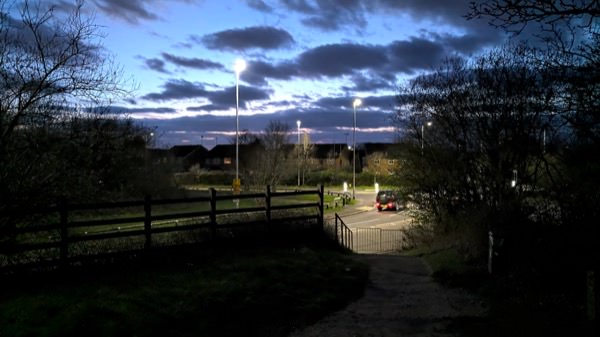
And here are central crops from (clockwise from top left) the Nokia 808, Lumia 1020, Lumia 950, and Nokia 9 (i.e. the latter is bottom left), click on any of the device names for the original JPG photos, for your own analysis.
(If viewing this article on a narrow mobile display then you'll see the crops one above the other, in order 808, 1020, Nokia 9, 950)



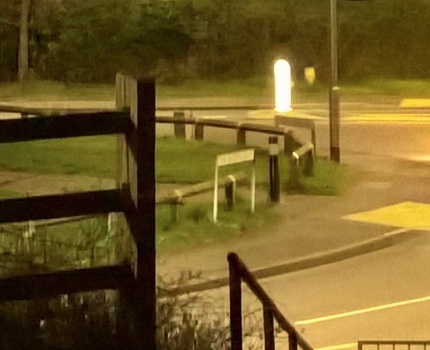
The Nokia 808 finally buckles and shows motion-blur from my hand - there was just no way to stabilise its huge sensor back in 2012! The Lumia 1020 had the famous 'ball bearings' OIS and as a result its shot is crisp and also remarkably detailed and noise free. That's OIS plus PureView in action for you. The Lumia 950 gets close, but it doesn't have the same degree of PureView oversampling, plus its sensor is a lot smaller so, for example, grass is turned into mush. Nice job on anything with sharp edges though. The Nokia 9 surprised me by not being absolutely terrible (given our earlier articles), the shot is crisp, despite no OIS, and there's good contrast - you can even just about read the road name ('The Bader Way')! The artefacts rather put me off, but I can see how some people might be drawn to its sharpened high contrast approach. So I'm going to be kind in the scoring. Sue me.
Nokia 808: 6 pts; Lumia 1020: 8 pts; Lumia 950: 9 pts; Nokia 9: 9 pts
Test 9: Dead of night
Even darker then, as dark as I'm going to go. In this museum scene, I could only just make out the plane with my eyes, though the hanger was lit from within, which helped. Here's the overall scene:
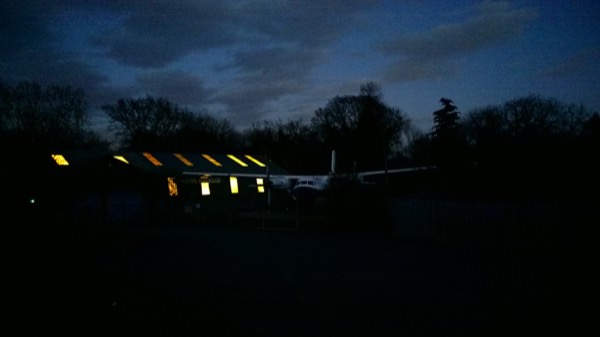
And here are central crops from (clockwise from top left) the Nokia 808, Lumia 1020, Lumia 950, and Nokia 9 (i.e. the latter is bottom left), click on any of the device names for the original JPG photos, for your own analysis.
(If viewing this article on a narrow mobile display then you'll see the crops one above the other, in order 808, 1020, Nokia 9, 950)
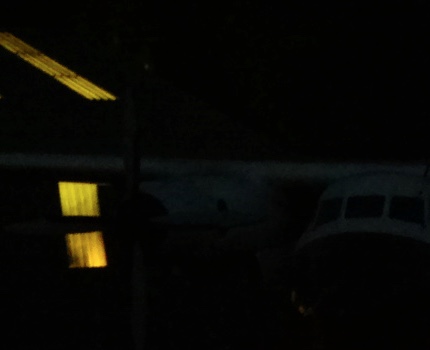
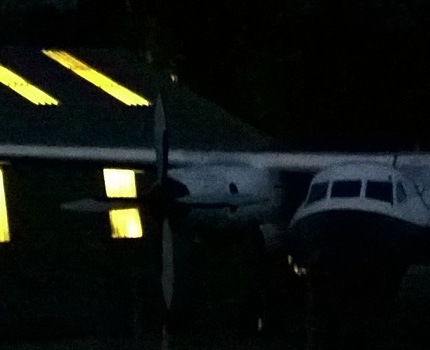
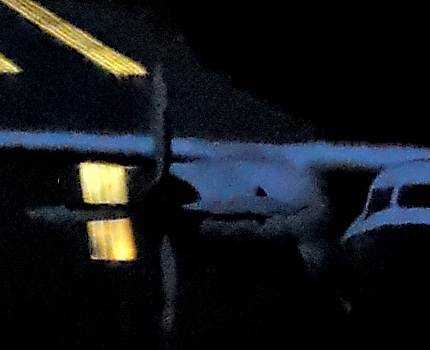

We're sorting the men out from the boys now, as it were. The Nokia 808 can't cope with these light levels (though some smart Alec will point out that with a tripod the Nokia 808 would probably win this entire page of tests - which is true, though carrying around a tripod isn't fair or practical!) and delivers just 'black', while the Lumia 1020 does a lot better with its large sensor, PureView *and* OIS, so tha plane detail is clearly seen. The Lumia 950 goes one better, with its newer sensor bringing out amazing detail, given the light levels.
The Nokia 9 is interesting here though - the pixels are there, but there's an extra 'fuzz' to proceedings which looks to me very much like something's wrong at the image processing/stacking stage - it has the potential to at least match the Lumia 1020 but its current algorithms (which take a good 10 seconds to calculate through) just aren't right - yet.
Nokia 808: 4 pts; Lumia 1020: 7 pts; Lumia 950: 9 pts; Nokia 9: 6 pts
Test 10: Party time!
Finally my infamous, mock-dancing, mock-laughing, mock-drinking test. Simulating the sort of snap you'd take at an evening party or other event. Here's the overall scene:

And here are central crops from (clockwise from top left) the Nokia 808, Lumia 1020, Lumia 950, and Nokia 9 (i.e. the latter is bottom left), click on any of the device names for the original JPG photos, for your own analysis.
(If viewing this article on a narrow mobile display then you'll see the crops one above the other, in order 808, 1020, Nokia 9, 950)
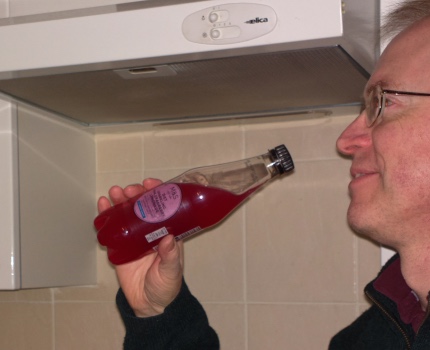



Ah yes, Xenon flash, how we've missed you in the phone world....! The Nokia 808 and Lumia 1020 snaps are super, crisp and even the colouring is good. However much your subject is moving, you'll get a good shot with Xenon, it seems. The Lumia 950 is normally 'OK' in this scenario, with just a little motion blur and generally 'good enough' freezing from its triple LED flash. The Nokia 9 is back where most other smart cameras still are, indoors with moving subjects - blur and a genuinely unuseable snap. Sorry, (new) Nokia...!
Nokia 808: 10 pts; Lumia 1020: 9 pts; Lumia 950: 7 pts; Nokia 9: 4 pts
Verdict
Totting up the points above gives us a rough idea of the imaging hierarchy in the PureView world:
- Lumia 1020: 89 pts (/100)
- Lumia 950: 86 pts
- Nokia 808: 76 pts
- Nokia 9: 71 pts
Which should be somewhat shocking to a casual observer. A 2013 smartphone camera just slaughtered a 2019 unit. It's worth noting that I'm testing all of these more or less on auto (apart from enabling flash for the last test and using 'bokeh' mode on the Nokia 9 for the flowers test). I mention that because some Nokia 9 reviewers have pointed out that its RAW output is much better, with no sharpening or noise issues. Which is... true, and I'll probably come back to that in a future feature, but it should be noted that ALL top phone cameras produce purer photos if you capture in RAW and then fiddle about in Lightroom or similar. The Lumia 1020 and 950 can capture in RAW in parallel with the JPG in exactly the same way as the Nokia 9, so the playing field, as it were, should still be level here. The Nokia 9 does have the horsepower to run Lightroom on the phone itself, mind you which is - to be fair - a new twist.
The big claimed USP for the Nokia 9 is its 'depth' system and the bokeh mode seems to work brilliantly at first glance, at web resolution, but in every single test shot here, looking at the edges at near-pixel level, there are errors, bits of background that show through 'unblurred' and bits of the subject that get erroneously blurred. And the problem is that once you've seen these glitches, you can't 'unsee' them. Maybe this is another case of software updates being needed, maybe the 'Time of Flight' sensor just isn't high enough resolution?
Ultimately though, at least in terms of my stills comparison, there's no real benefit in having a 'Light' array of five cameras rather than one big one. At least not yet.
There are other things I want to look at, of course, both head to head with the Lumia 950. Video capture, RAW/DNG, and so on. Plus, no doubt general review coverage of the Nokia 9 on my Phones Show and imaging comparisons with the likes of the best Samsung Galaxy flagships. But - coming up on the horizon is another (new) Nokia, codenamed X71, with a single 48MP sensor in more traditional PureView configuration - and, I suggest, that this may end up being a real successor to the older classic 40MP PureView camera phones.
PS. Thanks to Lawrence for helping out with the Nokia 9 hardware for these articles.
